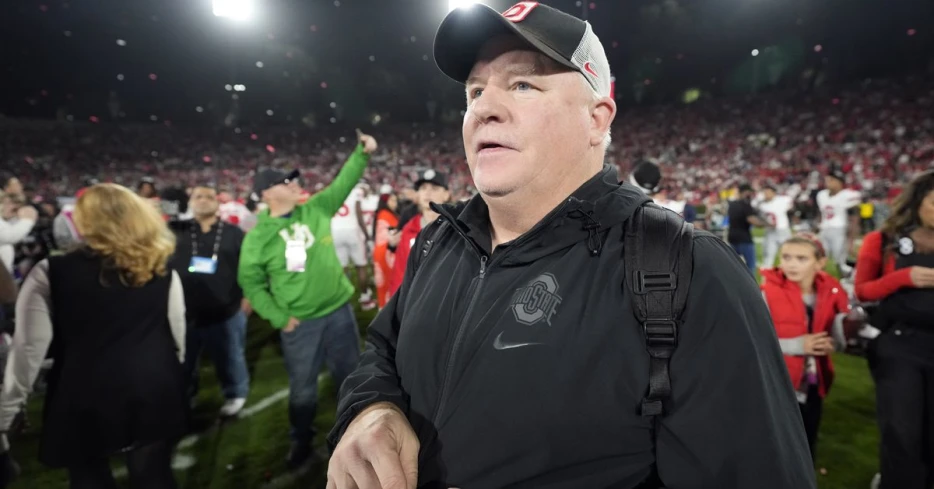
 Silver And Black Pride
Silver And Black Pride
The Raiders’ new offensive coordinator has a simple but deceptive rushing attack
From his early days at Oregon to this past season at Ohio State, new Las Vegas Raiders offensive coordinator Chip Kelly has been known for having a creative rushing attack.
That’s a big reason why the Buckeyes averaged 5.0 rushing yards per carry and 166.4 rushing yards per game as a team. Also, they had two running backs eclipse the 1,000-yard mark in Quinshon Judkins (1,060) and TreVeyon Henderson (1,016).
A big part of what makes Kelly’s rushing attack so effective is he’s deceptive, setting defenses up to attack their weaknesses in a variety of ways. So, let’s take a peek at what that looks like using a handful of examples from two games last season, against Penn State and Northwestern.
This became a staple of Ohio State’s playbook last season. Kelly used a 4x0 formation, meaning three wide receivers and one tight end are on one side of the offensive line and none are on the other side, to gain a numbers advantage on the weak side. Penn State has three defenders on the weak side which the center, right guard and right tackle can take care of by “getting a hat on a hat.”
Granted the play design here actually has the center working up to the strong-side linebacker while the center has a pre-snap leverage advantage on the backer. But Kelly maintains the numbers advantage by having the quarterback fake a read option which gets the standup outside linebacker to essentially block himself by crashing inside.
Additionally, the right guard invites the defensive tackle up the field while protecting the outside, which takes the defensive tackle out of the play. Then, all that has to be done is make sure the right tackle pins the weak-side linebacker inside. The tackle’s block is easier since the backer initially crashes downhill on the read option fake.
That creates a 20-yard gain where the running back doesn’t get touched until he’s forced out of bounds.
A running quarterback has typically been a big part of Kelly’s offenses in the past. It’s another way for the offense to gain a numbers advantage since the offense doesn’t lose a player in the blocking scheme. That forces defenses to play 11-on-11 instead of 11-on-10 since the quarterback isn’t just handing the ball off. Also, the running back can lead block.
Now, there’s nothing too fancy about a simple quarterback power run call. But Kelly throws in a wrinkle here by turning it into a pin-and-pull concept. That means the playside guard is the puller instead of the backside guard or tackle.
What that does is prevent the backside defensive tackle or end from working flat down the line of scrimmage and making the tackle. Instead, the playside defensive tackle is unblocked and shoots straight up the field so all the left tackle has to do here is get a piece of the defender to take the defender out of the play....